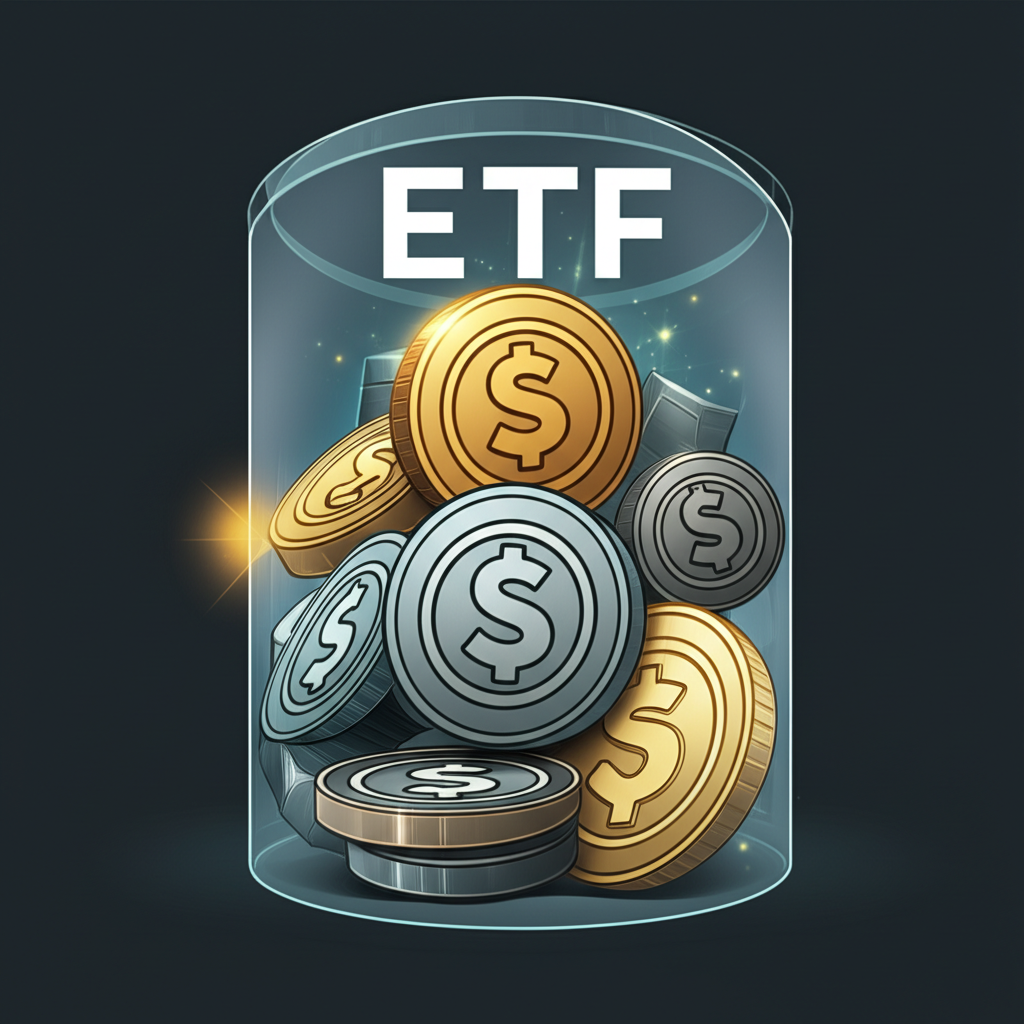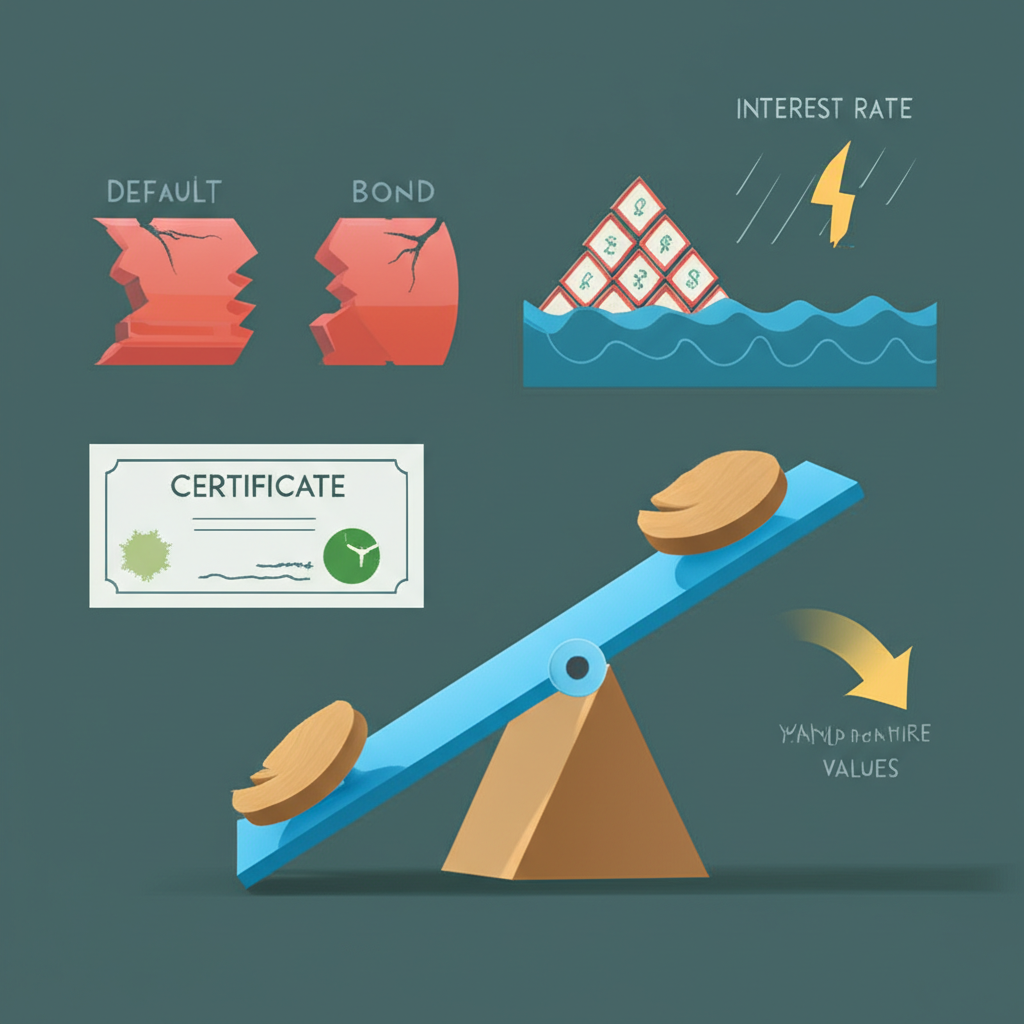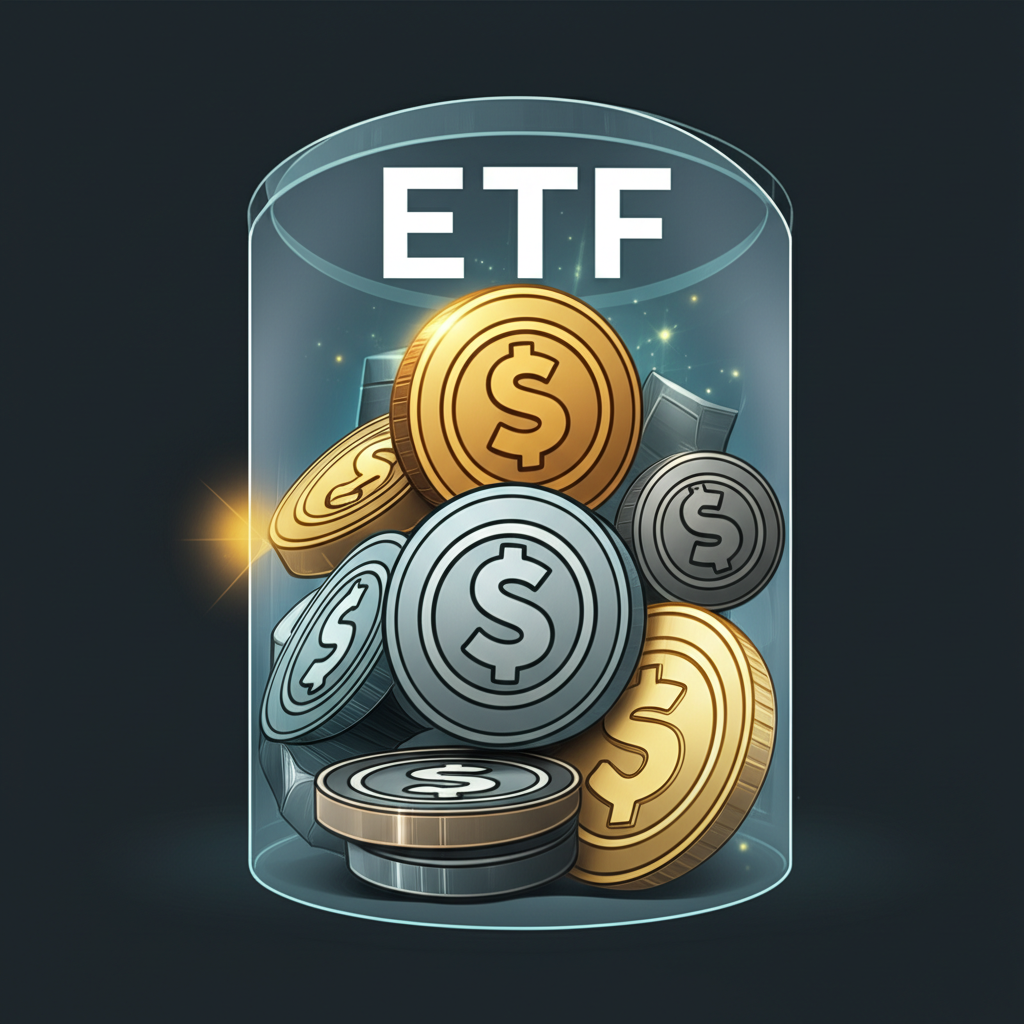Introduction to High-Yield Bond ETFs

High-yield bond ETFs have become a go-to option for investors aiming to boost income beyond what traditional investment-grade bonds offer. These funds collect capital from multiple investors and deploy it into a broad mix of high-risk, high-reward debt securities—commonly known as “junk bonds.” These bonds are issued by companies or municipalities with lower credit ratings, typically below BBB- from S&P or Baa3 from Moody’s. Because of their elevated risk of default, they compensate investors with higher interest rates. By pooling these bonds into an exchange-traded fund, investors gain access to instant diversification, daily liquidity, and expert oversight—features that help soften the blow of risks tied to individual bond holdings.
The Allure: Benefits of Investing in High-Yield Bond ETFs

Over the past decade, high-yield bond ETFs have gained traction among income seekers and tactical investors alike. Their appeal lies in the ability to deliver stronger returns while maintaining structural advantages over direct bond ownership. Let’s explore the core benefits that make these funds a strategic choice in modern portfolios.
Enhanced Income Potential
One of the most compelling reasons to consider high-yield bond ETFs is their ability to generate above-average income. Companies with weaker credit profiles need to attract lenders, so they issue bonds with higher coupon rates. This translates directly into more substantial monthly or quarterly distributions for ETF shareholders. For retirees or conservative investors seeking yield in a low-interest-rate environment, this feature can be a game-changer—offering a steady cash flow without venturing fully into equities.
Diversification Benefits
Buying a single high-yield bond can be risky—a default could wipe out a significant portion of your return. ETFs eliminate much of this concern by holding hundreds, sometimes thousands, of bonds across various industries and credit tiers. This broad exposure ensures that even if one issuer stumbles, the overall impact on the fund remains minimal. In essence, these ETFs turn a high-risk asset class into a more stable, manageable investment.
Liquidity and Accessibility
Unlike individual bonds, which often trade infrequently and with wide spreads, high-yield bond ETFs are listed on major exchanges and trade like stocks throughout the day. This means investors can enter or exit positions quickly at real-time market prices. The ease of trading allows for flexible portfolio adjustments, whether responding to economic shifts or rebalancing asset allocations—something that’s difficult with over-the-counter bond markets.
Professional Management
Whether passively tracking an index or actively managed by seasoned portfolio teams, high-yield bond ETFs benefit from expert oversight. Managers continuously monitor credit health, adjust holdings, and manage duration exposure. For individual investors who lack the time or expertise to analyze balance sheets and covenants, this professional layer adds significant value—freeing them from the burden of constant monitoring.
Navigating the Terrain: Risks Associated with High-Yield Bond ETFs

While the income potential is attractive, high-yield bond ETFs are not risk-free. Understanding the challenges they face is essential for long-term success. These funds may behave more like equities during downturns, and certain risks can erode returns if not properly managed.
Credit Risk and Default Potential
The biggest concern with junk bonds is the chance that an issuer fails to meet its obligations. Since high-yield companies often carry heavy debt loads or operate in cyclical industries, their ability to repay can falter during tough times. The higher yield is essentially a risk premium paid to investors willing to accept this uncertainty. Investopedia explains credit risk as a foundational concept in fixed-income markets—knowing how much risk you’re taking is half the battle.
Interest Rate Risk
All bonds lose value when interest rates rise, and high-yield ETFs are no exception. However, their sensitivity is generally lower than investment-grade bonds because they tend to have shorter durations and higher yields that cushion price declines. Still, if the Federal Reserve hikes rates aggressively, even these resilient assets can see volatility. Investors should check an ETF’s average duration—a measure of rate sensitivity—before committing capital.
Liquidity Risk (in Stressed Markets)
Under normal conditions, high-yield bond ETFs trade smoothly. But during market turmoil—such as a recession or credit crunch—the underlying bond market can freeze up. When that happens, ETFs may experience wider bid-ask spreads and larger-than-usual price swings, even if the ETF itself continues to trade. This disconnect between ETF liquidity and bond market liquidity is a subtle but important distinction.
Economic Sensitivity
High-yield bonds are sometimes called “risk-on” assets because they thrive when the economy grows. Companies in this space—like those in energy, retail, or telecommunications—are often more vulnerable to economic slowdowns. When consumer spending drops or financing dries up, default rates can climb. As a result, these ETFs often move in tandem with stock markets, especially during recessions. Fidelity’s analysis on high-yield bonds emphasizes their close link to business cycles and corporate earnings trends.
How to Choose the Right High-Yield Bond ETF for Your Portfolio

Selecting the right high-yield bond ETF isn’t just about chasing the highest yield. A thoughtful approach considers multiple factors that align with your financial goals, risk appetite, and market outlook. Here’s how to make a more informed decision.
Expense Ratios
Costs matter—especially in fixed income, where returns are often modest. An ETF with a 0.50% expense ratio may seem small, but over time, it can significantly eat into your income. Low-cost options like USHY, with a 0.15% fee, allow more of the yield to stay in your pocket. For passively managed funds, lower fees typically mean better net performance.
Duration and Interest Rate Sensitivity
Duration tells you how much a bond fund’s price might change if interest rates shift by 1%. A fund with a duration of 4 years could lose about 4% in value if rates rise by one percentage point. In a rising rate environment, shorter-duration ETFs like SHYG or HYLS are more resilient. For investors expecting stable rates, longer-duration funds may offer slightly higher yields.
Underlying Index & Holdings
For index-based ETFs, the benchmark matters. Some indexes focus on BB-rated “fallen angels,” while others include speculative CCC-rated debt. Review the fund’s top holdings, sector breakdown, and average credit rating. A concentration in energy or real estate could introduce unintended risks. For active funds, examine the manager’s track record and investment philosophy—do they prioritize income, capital preservation, or opportunistic trading?
Active vs. Passive Management
Passive ETFs replicate a benchmark and usually come with lower fees. Active funds rely on portfolio managers to outperform by selecting undervalued bonds or avoiding impending defaults. While some active managers have delivered consistent alpha, others haven’t justified their higher costs. The key question: do you believe skilled managers can add value after fees in a transparent, competitive market?
Yield vs. Total Return
It’s tempting to focus only on yield, but total return—the combination of income and price changes—is what truly matters. A fund with a 7% yield might lose 10% in value during a downturn, resulting in a negative return. Look at long-term performance across market cycles. A slightly lower yield with more stable pricing may deliver better outcomes over time.
Spotlight on Key Strategies: Short-Duration and ESG High-Yield ETFs
Beyond broad-market funds, specialized high-yield ETFs offer targeted exposure to specific niches. These strategies allow investors to fine-tune risk, align with values, or capitalize on macroeconomic trends.
The Appeal of Short-Duration High-Yield ETFs
Short-duration high-yield ETFs invest in bonds with maturities under five years, reducing exposure to interest rate swings. In a rising rate environment, these funds tend to hold their value better than longer-duration peers. They reinvest proceeds faster into higher-yielding instruments, creating a natural hedge. Investors using these ETFs often seek income with less volatility—ideal for tactical allocations during Fed tightening cycles.
ESG High-Yield Bond ETFs: Investing with Impact
Socially responsible investing isn’t limited to blue-chip stocks. ESG-focused high-yield ETFs screen for companies with strong environmental practices, fair labor policies, and transparent governance. The idea is that better-managed firms may face lower long-term credit risk. While data quality in the high-yield space can be inconsistent, the trend is growing. S&P Global’s insights on ESG and high-yield bonds highlight how material ESG factors—like energy efficiency or board independence—can influence financial resilience.
Emerging Markets High-Yield ETFs
For investors willing to take on extra risk, emerging markets high-yield bond ETFs offer even higher yields. These funds invest in debt from developing countries or local corporations, often denominated in U.S. dollars. While the potential returns are compelling, so are the risks: currency instability, political uncertainty, and weaker regulatory frameworks. These ETFs should be used sparingly and only as part of a well-diversified portfolio.
Top High-Yield Bond ETFs to Consider for 2024
With a range of options available, certain high-yield bond ETFs stand out for their size, cost efficiency, and strategic focus. The following list highlights some leading choices across different styles and durations. This is for informational purposes only and not a recommendation.
| Ticker | ETF Name | Expense Ratio | Primary Focus | Current Yield (Approx.) | Key Characteristic |
|---|---|---|---|---|---|
| HYG | iShares iBoxx $ High Yield Corp Bd ETF | 0.49% | Broad US Corporate | 6.5–7.5% | Largest and most liquid, broad market exposure. |
| JNK | SPDR Bloomberg High Yield Bond ETF | 0.40% | Broad US Corporate | 6.5–7.5% | Similar to HYG, widely used. |
| SHYG | iShares 0-5 Year High Yield Corp Bd ETF | 0.30% | US Short-Duration Corp | 6.0–7.0% | Mitigates interest rate risk with shorter duration. |
| USHY | iShares Broad USD High Yield Corporate Bond ETF | 0.15% | Broad US Corporate (Low Cost) | 6.5–7.5% | One of the lowest expense ratios in the category. |
| HYLS | PIMCO Enhanced Short Maturity Active ETF | 0.55% | Active Short-Duration | 6.0–7.0% | Actively managed for short-duration high yield. |
Integrating High-Yield Bond ETFs into Your Investment Portfolio
Used wisely, high-yield bond ETFs can enhance income and diversification without derailing your overall strategy. The key is positioning them appropriately within your asset mix.
Role in Diversification
Though not as stable as government bonds, high-yield ETFs behave differently than stocks and investment-grade bonds. They can act as a bridge asset—offering higher yields than Treasuries while being less volatile than equities. Including them in a balanced portfolio may improve risk-adjusted returns, especially when paired with low-correlation assets like REITs or international bonds.
Asset Allocation Considerations
There’s no one-size-fits-all allocation. Conservative investors might limit high-yield exposure to 5–10% of their fixed-income sleeve. Aggressive investors seeking income may go higher, but should do so with caution. These ETFs should complement—not replace—core bond holdings like aggregate or municipal bond funds.
Long-Term vs. Short-Term Strategy
For long-term investors, high-yield bond ETFs can deliver consistent income and modest capital appreciation over time. They tend to recover well after downturns, especially if defaults don’t spike. For short-term plays, investors might rotate into short-duration ETFs when rates are rising, then shift back to broader funds when conditions stabilize.
Conclusion: Weighing the Rewards and Risks
High-yield bond ETFs offer a powerful tool for income generation, combining the yield of junk bonds with the convenience of ETFs. Their diversification, liquidity, and professional management make them accessible to everyday investors. Yet, they come with real risks—credit defaults, economic downturns, and market volatility. By focusing on cost, duration, credit quality, and total return, investors can navigate this space with greater confidence. When aligned with personal goals and risk tolerance, these ETFs can play a valuable role in a resilient, income-focused portfolio.
Frequently Asked Questions (FAQs)
What are the key differences between high-yield corporate bond ETFs and high-yield municipal bond ETFs?
High-yield corporate bond ETFs invest in debt issued by corporations, which are subject to federal and often state/local income taxes. High-yield municipal bond ETFs, conversely, invest in debt issued by state and local governments; the interest income from these bonds is often exempt from federal income tax and sometimes state and local taxes for residents of the issuing state. Municipal bonds generally have lower default rates than corporate bonds, but their yields are also typically lower due to the tax advantages.
How does the credit quality of underlying bonds affect a high-yield ETF’s performance?
The credit quality of underlying bonds is a primary driver of a high-yield ETF’s performance and risk. ETFs with a higher concentration of lower-rated bonds (e.g., CCC-rated) will generally offer higher yields but also carry significantly higher credit risk and sensitivity to economic downturns. ETFs with a greater allocation to higher-rated high-yield bonds (e.g., BB-rated, often called “fallen angels”) tend to be more resilient during market stress but may offer slightly lower yields.
Can high-yield bond ETFs be a suitable investment for retirement income?
High-yield bond ETFs can be a component of a retirement income strategy for investors who are comfortable with their elevated risk profile. They can provide a higher income stream compared to investment-grade bonds. However, due to their credit risk and sensitivity to economic cycles, they are generally not recommended as the sole source of fixed income for retirees. A diversified approach that includes investment-grade bonds and other income-generating assets is often more prudent.
What role do ratings agencies like S&P and Moody’s play in high-yield bond ETFs?
Ratings agencies like S&P, Moody’s, and Fitch play a crucial role by assessing the creditworthiness of bond issuers. Their ratings (e.g., BB, B, CCC for high-yield bonds) are fundamental to how bond ETFs classify and select their holdings. These ratings help investors and ETF managers gauge the default risk of individual bonds, influencing the composition and risk profile of high-yield bond ETFs. A change in a company’s credit rating can also significantly impact the market price of its bonds and, consequently, the ETF’s performance.
How can investors assess the liquidity of a high-yield bond ETF?
Investors can assess an ETF’s liquidity by looking at several factors: the average daily trading volume, the bid-ask spread, and the liquidity of its underlying holdings. ETFs with high daily trading volumes and tight bid-ask spreads are generally more liquid. Furthermore, while the ETF itself trades on an exchange, its liquidity is also influenced by the liquidity of the underlying high-yield bond market, which can be less liquid than other fixed-income markets, particularly during stressed conditions.
What is the typical correlation between high-yield bond ETFs and equity markets?
High-yield bond ETFs tend to have a higher correlation with equity markets than with investment-grade bonds. This is because the performance of high-yield issuers is more sensitive to economic growth and corporate profitability, similar to stocks. During economic expansions, both high-yield bonds and equities often perform well. Conversely, during economic downturns, high-yield bonds can experience declines alongside equities due to increased default risk.
Are there any tax implications specific to high-yield bond ETFs?
Yes, the distributions from high-yield corporate bond ETFs are generally taxable as ordinary income. Unlike municipal bonds, which often offer tax-exempt interest, corporate bond interest is fully taxable. Investors should also be aware of potential capital gains distributions if the ETF sells bonds at a profit, which are typically taxed at long-term capital gains rates if held for over a year. It’s always advisable to consult with a tax professional regarding specific tax implications.
How often do high-yield bond ETFs pay distributions?
Most high-yield bond ETFs pay distributions on a monthly basis. This frequent payout schedule is attractive to income-focused investors who rely on regular income streams from their investments. The amount of the distribution can fluctuate based on the interest payments received from the underlying bonds and any changes in the ETF’s portfolio holdings.
What is “fallen angel” high-yield and are there ETFs that focus on it?
“Fallen angels” are bonds that were originally issued with an investment-grade rating but were subsequently downgraded to high-yield (junk bond) status. These bonds often have unique characteristics, as they come from larger, more established companies that experienced temporary financial difficulties. Some ETFs specifically focus on fallen angels, as they can sometimes offer attractive valuations and a potential for future upgrades back to investment-grade status, such as the VanEck Fallen Angel High Yield Bond ETF (ANGL).
How do high-yield bond ETFs perform during periods of rising interest rates?
During periods of rising interest rates, high-yield bond ETFs can face headwinds. The market value of existing bonds with lower fixed coupons tends to decrease. However, the impact is generally less severe than for investment-grade bonds due to their shorter duration and higher credit spread. Additionally, as rates rise, new bonds issued by high-yield companies will offer higher yields, which can eventually benefit the ETF’s income stream as it reinvests. Short-duration high-yield ETFs are specifically designed to mitigate this risk.



No responses yet